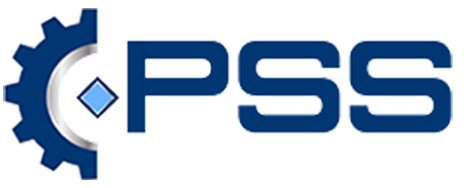There is no doubt that right now we are living in a time of a lot of uncertainty. Many are faced with the loss of a job, cut back on the number of hours allowed to work, the potential for illness, and the concern for family and friends. For the most part, these things are out of our own personal control.
However, each of these concerns can weigh heavily on every one of us and can also result in less focus on those risks we can control. Perhaps those of us in process safety management, understand this more so than others. We understand to control risk we must focus on those things that we can control, and not let distractions render our risk reduction efforts mute.
We cannot take a break from process safety. In fact, the last thing any of us need right now is a catastrophic event that results in major injuries, or worst yet, fatalities. Most of us have seen that the EPA has relaxed some of its enforcement activity during this time.
That does not mean in any way that facilities do not have to continue to do those activities as they relate to OSHA’s process safety management (PSM) or the risk management plan (RMP) rule. Process safety is always the “right thing to do”, regardless if it is required by a regulation or not. The following are some recommended guidelines to follow.
Even though the EPA and OSHA may be hunkered down, and doing extremely limited enforcement work, it does not mean that incidents will not occur. In fact, incidents in our industries were happening way too often even before the coronavirus pandemic arrived! With the added distractions, we should be even more vigilant now than ever before since these distractions can take our focus away from doing those things that mitigate risks to ourselves, and to those around us.
The first key is to take employee engagement even higher with regards to operations personnel. We must make sure there is not a loss of focus on the task at hand, while at the same time, making sure that their personal needs are met as well. This, of course, is easier said than done. Making sure we are spending more time virtually, or on the phone asking the questions that need to be asked, and lending support to address the issues as they arise, are just a few areas we can be more fully engaged with the operations personnel.
Secondly, we need to keep in mind that anytime a regulatory requirement date is not met, it could be subject to citations and fines, regardless if there is a legitimate reason or not, especially when nothing was done to address the underlying risks and other mitigation measures taken.
Therefore, any postponement of critical process safety tasks, must be carefully evaluated. The following are some (not all) potential means for addressing critical process safety requirements and tasks:
Process Hazard Analysis (PHA)Conduct A Management Of Change (MOC)
This allows you to postpone the start and or the completion of the PHA to a later date. Keep in mind, simply completing an MOC to postpone the PHA would not be acceptable, without documenting what is to be done to mitigate the additional risk associated with postponing the analysis. This can be done in multiple ways such as looking at previous incidents, changes to the process, and discussions with operations regarding any issues that have evolved since the last PHA. This is essentially conducting a revalidation of the existing PHA through various individual reviews.
Conduct a Virtual PHA
A virtual PHA is one where participants and facilitator are remotely located. Granted, conducting a PHA normally involves several resources and having each of them in different locations is not always ideal, and it may not lead to the best analysis. However, this method can be effective and result in an excellent analysis assuming the right tools are utilized, and the daily team time is limited. No one thought that just a month ago, the vast majority of our facilities support personnel would be working from home, but that is what it is, so we may need to adapt and try things that we would not normally consider in order to minimize risk.
Compliance Audits
Unlike a PHA, a compliance audit can be conducted by resources independent from each other. However, when using internal corporate, or a third-party auditor(s), travel may become an issue. In any case, as much as 90% or more of the audit can be conducted remotely, up to and including employee and technician interviews.
The exception will be the facility walk-through and any additional requirements generated from that portion of the compliance review. The facility walk-through portion can be done at a later date when restrictions are lifted. In the interim, a preliminary report can be issued regarding the gaps in the implementation of your process safety management systems that were identified through document reviews and interviews.
These gaps, then can be addressed to further reduce risks in the facility. It would also be strongly advised to use the facilities management of change process to outline the changes to the compliance auditing process. The MOC would document the mitigation steps to be taken including the completion of all but the onsite portion of the audit.
Mechanical Integrity Inspections & Test
When it comes to mechanical integrity programs, every effort should be made to conduct these inspections and tests on time. Perhaps we need to remind ourselves that mechanical integrity is a major component in reducing risk.
Every one of our processes have not only vessels and piping that is subject to corrosion and other modes of failure, but we typically have numerous other designated safeguards in place to further mitigate risks as well. These other safeguards include safety alarms, permissives, safety instrumented systems (SIS), emergency shutdowns, detection and suppression systems, and safety critical controls. Each of these devices plays a critical role in our process to ensure safe operations. Ensuring that these systems work is even more important now than ever!
However, it is also recognized that there are some cases where, due to travel restrictions and resource availability, some mechanical integrity tests and inspections may not be able to be done on time. If that is the case, then just as in the case of the PHA, an MOC must be initiated to postpone or defer these tests and inspections. Again, the MOC must contain specific steps that are to be taken to mitigate the additional risk associated with postponing the inspection and test.
Keep in mind these safeguards are typically in place to mitigate catastrophic events. Therefore, not fully evaluating how postponing a test or inspection can lead to these events occurring would be unacceptable and irresponsible.
In addition, we know based on nearly 250 compliance audits, that there is over a 17% failure on demand rate when safeguards are tested and inspected. It would then stand to reason that postponing these tests could very well lead to increased failure rate, leaving a facility extremely vulnerable to a catastrophic event.
Employee Training (Occupational Safety & Health and Operations)
When it comes to occupational safety and health training, there is no reason why this training should not be done on time and on schedule. At Process & Safety Solutions, we offer many computer-based and virtually lead training opportunities for nearly all occupational safety and health requirements. Some operational training on the other hand may be somewhat more difficult, but it can also be done virtually and through minimal on-site involvement.
In fact, most facilities currently utilize some form of blended learning to train new operators that consists of some classroom or computer-based training, shadowing, hands-on (mentoring), and then a final written evaluation of understanding. Whatever your current method is for training employees, it must be maintained.
Under no circumstances should any untrained personnel be allowed to operate a process that has not been certified to do so following your own internal training requirements. Now is not the time to change training requirements, and in fact, now is the time they need to be even more stringent and strictly enforced!
Any time we need to postpone or modify risk reduction processes and procedures, we put our facility personnel, and the facility itself, in danger. This time will pass, but the more we can do now to reduce or further mitigate risk, the more quickly and safely we can return to more normal operations when that time comes.
If you have any questions during this difficult time, please feel free to reach out to us. We’re happy to help in any way we can.

